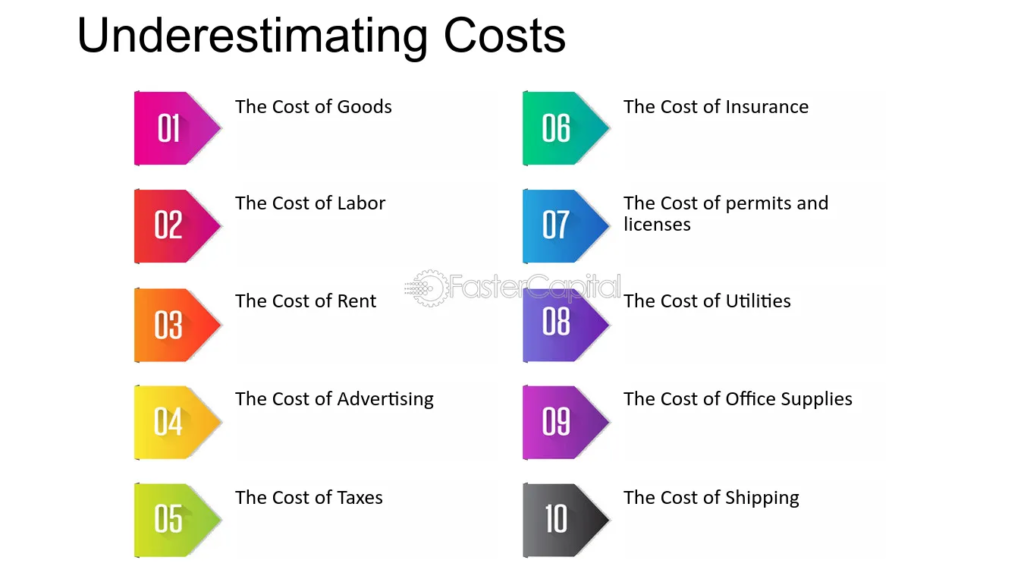Budgeting plays a crucial role in game development.
Budget is an important element in the game development process. In addition to ensuring efficient resource allocation, it also aids in risk management and achieving desired results within set constraints. In a competitive market, game makers can improve their chances of success by learning and using efficient budgeting techniques.
Overview of the Blog Post’s Goals
The blog post aims to educate game developers on the importance of budgeting. The purpose of this blog article is to explain the value of budgeting to game creators, draw attention to typical budgeting errors, and offer doable solutions to help them.
Mistake 1: Underestimating development costs

1. Incomplete cost estimates
When you underestimate development costs, you often ignore or undervalue important items like software licenses, hardware, and third-party services.
2. Impact on Project Completion
If you underestimate the costs, you might run out of money before the project is complete, which could cause delays or force you to compromise the quality of the game.
3. The importance of thorough research
To avoid underestimating, make sure you thoroughly investigate and list all possible prices. For example, the developers of the video game “Shovel Knight” carried out a great deal of planning and research, which allowed them to properly crowdfund their project and accurately compute payments, ensuring they would have enough money to finish the game.
4. Seeking expert advice
Speak with knowledgeable developers to obtain realistic figures. With the help of experienced developers, the “Stardew Valley” team was able to more accurately calculate project costs and manage the money they had.
Mistake 2: Ignoring Marketing and Distribution Expenses

1. Importance of Marketing and Distribution
Marketing and distribution are crucial for making sure people know about your game and can buy it easily. Without proper marketing, even a great game might not reach its potential audience.
2. Common Oversight
Game developers generally prioritize making games above planning and budgeting for marketing and distribution. This may result in low sales, no matter how good the game is.
3. Marketing costs
Marketing costs can include:
- Advertising (online ads, social media campaigns)
- Public relations (press releases, media coverage)
- Promotional materials (trailers, demos)
- Participation in events (game conventions, expos)
For example, sales of the video game “Hollow Knight” increased significantly as a result of successful marketing techniques, including social media campaigns and conventional presence.
4. A Real-Life Example of Ignoring These Costs
Limited promotion and a poor release timeline contributed to Titanfall 2’s poor sales, despite the game’s excellent gameplay and reviews. The absence of a strong marketing and distribution plan has greatly limited its sales and exposure.
Mistake 3: Not preparing for contingencies

Description of the Mistake
When you don’t budget for unforeseen circumstances or costs that may come up during the game development process, you leave money on the table. It is comparable to not having a fallback plan in case things go wrong.
Common Unexpected Costs
Here are some common unexpected costs in game development:
- Technical Issues: To handle unexpected technical problems, it may require more money or specialist knowledge.
- Legal Fees: In relation to legal matters such as licensing disputes or copyright infringement claims, legal representation may be required.
- Changes in the market or in industry trends may necessitate modifications to the game’s design or its marketing plan.
- Unexpected Delays: Unexpected events can cause development delays, which can lead to longer development times or higher expenses for missing deadlines.
Real-Life Example
Many people complained when “No Man’s Sky” came out because it lacked several of the promised features. Unexpected technical issues and scope creep caused delays and higher development costs for the developers. Their lack of preparation for these unexpected circumstances left them with a damaged reputation and disappointed players.
Mistake 4: Over-Reliance on a Single Funding Source

Description:
Over-reliance occurs when you heavily rely on one source of funding for your game development project. It can be risky to rely solely on one source of funding if it fails.
Common Consequences:
- Financial Vulnerability: If you put all of your money into one source and it unexpectedly fails, your project may be susceptible.
- Limited Options: Relying only on one source of funding could make it more difficult for you to take advantage of new opportunities or adjust to changing circumstances.
- Difficulty in Recovery: Without backup funding in place, it can be difficult to recover from setbacks in the event that the main funding source fails.
- Strained Relationships: If expectations aren’t met or the project fails, an over-reliance on one source of funding could cause problems for relationships with supporters or buyers.
Avoiding the Mistake:
To avoid over-relying on a single funding source,
- Diversify Funding Streams: To spread the risk, look for a variety of funding sources, including grants, investors, crowdfunding, and personal savings.
- Build Relationships: Build connections with different possible supporters or buyers to create a network of support.
- Create a Financial Safety Net: To protect against unexpected costs or problems, establish a backup fund.
By increasing their funding sources, developers can reduce their financial risk and make their projects more adaptable to unforeseen challenges.
Mistake 5: Underestimating the cost of external services

Description of the Mistake
Underestimating the cost of outside services refers to the mistakes in the cost estimate when employing outside specialists or businesses to complete particular tasks. This may result in unexpected development costs and budget gaps.
Commonly underestimated services
- Artwork and Design: It’s common for the cost of hiring professional artists for character designs, environments, and animations to go above the initial costs.
- Sound Design and Music: It usually takes professional sound designers and composers, who can be costly, to produce the highest level of original music and sound effects.
- Voice Acting: For recording sessions, professional voice actors charge fees that may rapidly add up, particularly if you have a large cast of characters.
- Localization: Due to the need for cultural adaptation, translating a game into multiple languages can be costly.
- Outside marketing organizations charge for services such as event planning, press release distribution, and social media brand promotion.
Avoiding the Mistake
To prevent underestimating these costs, obtain multiple quotes from service providers, allocate additional funds for potential price hikes, and allocate sufficient funds for these essential services. This guarantees that you won’t have any financial surprises while maintaining quality.
Conclusion
It takes careful planning, accurate calculations, and wise payouts to avoid these common budgeting errors. By avoiding these mistakes, game developers can better manage costs and increase the likelihood of their project succeeding.
